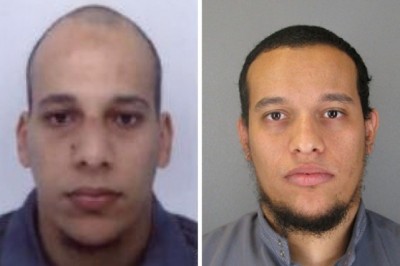U.S. Officials Claim French Authorities Killed One Suspect, Arrested Two Others In Charlie Hebdo Attack
Working class background of suspects does not explain professional military performance

Although unconfirmed by the French, U.S. officials have told the media one suspect in the Charlie Hebdo attack was killed and two others are in custody.
The men were earlier identified as French nationals Said and Cherif Kouachi and Hamyd Mourad, whose nationality wasn’t immediately clear.
According to news reports, the men were linked to an unspecified terror network in Yemen. In 2008, Cherif Kouachi was convicted on terrorist charges and assisting the Iraq insurgency against the U.S. occupation of that country.
In March of 2008, Kouachi told the Associated Press he was motivated to assist the Iraqi resistance after seeing television images of torture of Iraqi inmates at the U.S. prison at Abu Ghraib.
Police identify suspects in #CharlieHebdo shooting. Brothers Said and Cherif Kouachi http://t.co/zKIuSvsC09 pic.twitter.com/UqqCtvNoA3
— ABC News (@abcnews) January 8, 2015
Prior to the Abu Ghraib revelations, the Liberation newspaper reported, Cherif was not a devout Muslim. He had girlfriends, smoked and drank alcohol.
The background of the suspects fits a familiar pattern and bolsters the government narrative of a domestic terror threat by radicalized Muslims.
The capture today of the alleged suspects, however, does not explain the professional military behavior of the masked gunmen who stormed the Charlie Hebdo offices and killed two French policemen.
The New York Times and other sources describe Cherif Kouachi as a working class Muslim who was recruited at a mosque near his home in Paris in the 19th Arrondissement. News reports say nothing about military training or service in the French military.
“The trail of would-be fighters from Europe to Iraq appears far less sophisticated than that which thousands of young European Muslims followed to Afghanistan in the 1980’s and 1990’s,” The New York Times reported in February 4, 2005.
The CIA and Pakistani intelligence were responsible, with Saudi support and financing, for the creation of the “Afghan Arab” network to defeat the Soviet occupation of Afghanistan.
Elements of that network would later become al-Qaeda and the Taliban.

